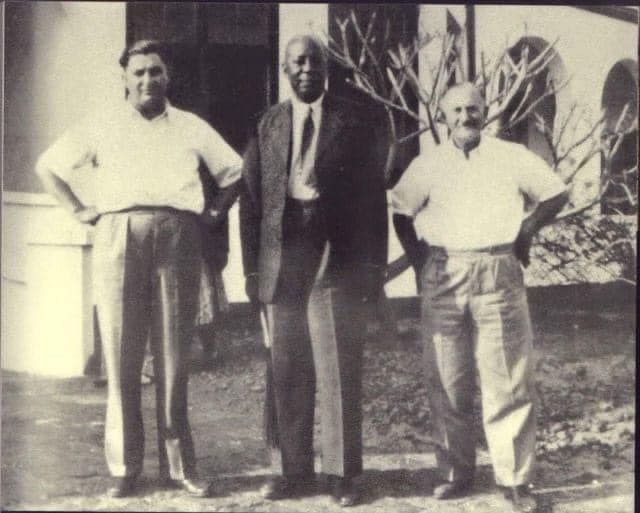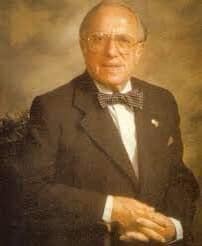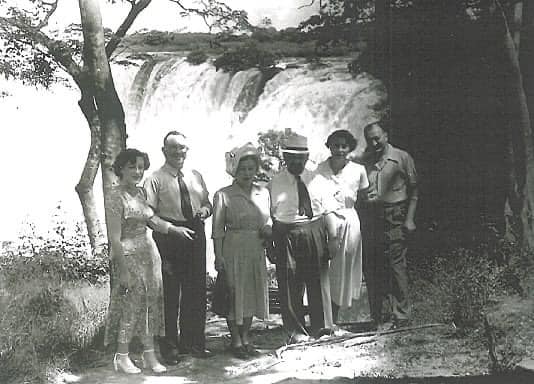MINI HISTORY OF JEWISH CONTRIBUTION TO ZAMBIA’S ECONOMIC GROWTH
Northern Rhodesia was a British colony together with many other countries that formed part of the British empire. Behind the scenes other nationalities took part in the business and economic expansion of the colonies.
In Northern Rhodesia a small number of businessmen of Jewish origin contributed to the early growth of economic activities. Notable among them is the Susman brothers Ellie and Harry who were pioneers in the early 1900s.
By the mid century Abe Galaun who arrived after Word War II became a powerful force in the economic activity of the new state of Zambia up to the time of his demise. He started Galaunia holdings which owned vast properties in the Lusaka CBD, was involved in large scale ranching and owned thousands of acres of land around Lusaka.
Most of these acres of land were sold to a Zambian estate developer and are now known as Meanwood properties where Zambians of the current era are still benefiting from the fruits set up by Abe Galaun by buying plots in Meanwood and building residential properties.
However, the number of Jews in Zambia has dwindled over the years and only about a 100 remain mainly in Lusaka and the Copperbelt
BRIEF HISTORY:
The two earliest Jewish settlements in Northern Rhodesia were in Livingstone and Broken Hill. When the railway reached Victoria Falls in 1905, there were enough Jews in Livingstone to start a congregation. By 1910, when the first Jewish wedding in Northern Rhodesia was celebrated, the congregation had 38 members. Jewish pioneers did much to open up the country, developing the cattle trade and ranching. Maurice Rabb, Harry Wulfsohn, Len Pinshow, Hanan Elkaim, and the Susman brothers, Elie and Harry, were just some of these Jewish immigrants whose enterprise and initiative laid the foundations of the modern-day Zambian economy.
The Susman Brothers, who arrived in 1900, were the first to develop large-scale wagon and river transport to Barotseland. Just before 1914, they pegged the Nkana copper mine but could not float a company to open it because the mine was in tsetse fly country.
They sold their claim for £250 to what is now the largest copper mine in Zambia. Sir Edmund Davis, Solly Joel, and Sir Ernest Oppenheimer were prominent in developing copper mining. Abe Galaun (1914–2003) arrived in Zambia just before the outbreak of World War II and became a dominant force in the country’s meat and dairy business to the extent that Zambian President Kenneth Kaunda dubbed him “the man who feeds the nation.”
Galaun was involved in a wide range of charitable enterprises and his extensive contribution to Jewish communal life included founding the Council for Zambia Jewry. In 1921, out of a total Jewish population of 110, 48 lived in Livingstone, 11 in Broken Hill, and 25 in Lusaka. In succeeding years the Jewish population grew slowly, increased mainly by refugees from Nazi Germany in the late 1930s.
As happened in neighboring Southern Rhodesia and the Belgian Congo, there was a substantial influx of Sephardi immigrants, largely from the Greek island of Rhodes. With the development of the copper mines in the north and the general growth in population and commerce, the Jewish population reached a peak of about 1,200 in the middle 1950s; most lived in Lusaka and the copperbelt centers of Kitwe, Ndola, Mufulira, Chingola, and Luanshya, in each of which there was a small but organized Jewish congregation.
After 1960 numbers declined. In 1968, the estimated figure was 500, excluding some 200 on short-term contracts with Solel Boneh (the construction company of the Israel labor federation) and other overseas enterprises.
Younger people tended to leave, and most of the older school-age groups were sent to Rhodesia or South Africa for their education. In communal and Zionist affairs Zambian Jewry remained linked until the late 1960s with the Central African Jewish Board of Deputies and Zionist Organization.
Thereafter, the Council for Zambia Jewry, after 1993 through its affiliation to the African Jewish Congress, oversaw the community’s affairs. Before Zambia’s independence in 1964 Jews played an active role in local government. Jewish mayors served in Livingstone, Broken Hill, Kitwe, and Luanshya.
In the political field Sir Roy Welensky was the leading figure in Northern Rhodesian politics from the 1930s until the Federation was set up in 1953, when he moved to Salisbury (today Harare) as deputy prime minister; M.G. Rabb was a member of the legislative assembly from 1959 to 1962, and S.W. Magnus was a member of parliament from 1962 to 1968, when he resigned to become a judge of the high court. As happened in South Africa, some Zambian Jews were active in resistance politics on behalf of the disempowered black majority in the pre-independence era.
Most noteworthy of these was Lithuanian-born Simon Zukas, who played an important part in Zambia’s independence struggle in the postwar era and in 1952 was in fact exiled on this account by the colonial government. Zukas returned to Lusaka after 1962 and later served as agriculture minister in President Frederick Chiluba’s first cabinet (1991).
A number of South African Jews who were prominently involved in the struggle against apartheid in their home country, amongst them Joe Slovo, Ronnie Kasrils, and Ray Alexander, were based in Lusaka for the greater part of their years in exile before returning to South Africa after 1990. The Zambian Jewish community steadily dwindled in the post-independence era. About 50 Jews remained in 2004, most of them living in Lusaka.
Zambian Jewry in the early 2000s comprised a small core of long-term “settlers” and more transient residents engaged in trade, commerce, agriculture, and the professions. The community comes together for religious services on the High Holidays and Passover, as well as for Israel’s Independence Day and other Israel-related events.
There are eight Jewish cemeteries scattered around the country, and they are maintained by the remaining members of the community, in consultation with the African Jewish Congress.
REFERENCE
H. MacMillian and F. Shapiro, Zion in Africa – The Jews of Zambia (1999).
In Pics: (Pic 1 )Chief Rabbi of Great Britain and the Commonwealth Israel Brodie and Mrs Brodie, with Jewish Community Leaders of Northern Rhodesia on visit to Victoria Falls Livingstone, Zambia, February 1950 (Pic 2) Abe Galaun (Pic 3) Susman Brothers with the Litunga Imwiko, 1940s



CREDIT: Zambian history in pictures